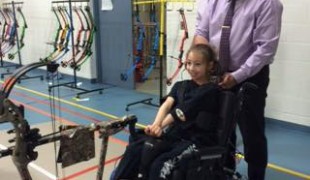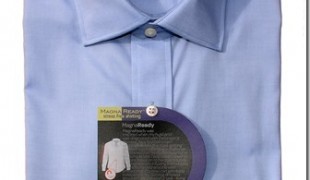- 6692
- 412
- 24
- 18
- 0
- Help Ukraine
About the solution
João Carlos Martins is a world-renowned pianist and conductor from Brazil, known for his extraordinary interpretations of the work of Bach. But he went through a troubled career: several injuries, accidents and chronic diseases systematically compromised his ability to play the piano. Through the years, the pianist underwent 24 surgeries that tried to maintain his abilities but with no success. First, he lost the movement of his right hand – spending years playing with his left hand alone – but eventually even the left hand lost function and he retired from playing in 2019, making a last performance on Brazilian national TV.
Ubiratan Bizarro, a Brazilian industrial designer, watched that performance and in that moment decided to take up the challenge of finding a way to help the pianist. He developed a prototype for a pair of gloves that would theoretically allow the pianist to regain movement in his hands and one day, Ubiratan went to a performance were João Carlos was conducting and showed him the prototype. The pianist explains in an interview that the gloves didn’t work, they were “suitable for boxing, at best. But I kept thinking that this guy had shown a real interest, so I invited him over for lunch and explained what had happened to my hands.”
The two then developed a relashionship and Ubiratan started to further develop and improve his prototype, with the pianist’s feedback. The major issue was that, even though João Carlos could still press down with his fingers on the keyboard, he could not bring them back up. After six months, the sixth prototype proved to be successful and got the approval from both the pianist and his medical team. This final prototype consist of a pair of neoprene gloves that have flexible rods that extend from the back of the hand to each finger. When the pianists presses a key, the rods bring the finger back up to their original position, like a spring.
At the age of 80-year-old, the pianist could once again play the piano with both hands – something that he hadn’t been able to do in 22 years – and he is very grateful to the designer who gave him this opportunity: “who would have thought that a designer without medical training could create such a thing?”.
Ubiratan has made the gloves available for purchase online so that they can be available for other who might benefit from them.
Adapted from: https://restofworld.org/2021/how-the-maestro-got-his-hands-back/
https://www.dn.pt/vida-e-futuro/luvas-especiais-fazem-maestro-de-80-anos...
More information: https://luvasleb.com.br/
This solution shall not include mention to the use of drugs, chemicals or biologicals (including food); invasive devices; offensive, commercial or inherently dangerous content. This solution was not medically validated. Proceed with caution! If you have any doubts, please consult with a health professional.
DISCLAIMER: This story was written by someone who is not the author of the solution, therefore please be advised that, although it was written with the utmost respect for the innovation and the innovator, there can be some incorrect statements. If you find any errors please contact the patient Innovation team via info@patient-innovation.com
-
-
606
-
0
-
8252

Father creates gadgets adapted for people with cerebral palsy
MOVING IN A WHEELCHAIR: Moving using a wheelchair.
Playing
Gardening
Social interaction
Cerebral Palsy
Educational/Leisure device (book, toy, game...)
Assistive Daily Life Device (to help ADL)
Muscle cramps or spasms
Difficulty coordinating movements
Trouble with fine motor skills (e.g., writing, buttoning clothes)
Twitching or involuntary movements (myoclonus)
Fatigue
Restoring mobility
Promoting self-management
Managing Neurological Disorders
Promoting inclusivity and social integration
Caregiving Support
Neurology
Pediatrics
Physical Medicine and Rehabilitation
Canada
-
-
-
1015
-
9
-
27809

Mother creates device to help his son to walk again
WALKING: Walking
WALKING WITH A WALKING AID: Walking with a walking aid
Cerebral Palsy
Assistive Daily Life Device (to help ADL)
Body-Worn solutions (Clothing, accessories, shoes, sensors...)
Walking Aid (wheelchair/walker/crutches)
Impaired movement
Restoring mobility
Managing Neurological Disorders
Maintaining Balance and Mobility
Caregiving Support
Neurology
Pediatrics
Physical Medicine and Rehabilitation
Israel
-
-
-
762
-
0
-
13626

MagnaReady® - adaptative clothing for people who struggle with fine motor skills
Grip
CAREGIVING
Parkinson's Disease
Body-Worn solutions (Clothing, accessories, shoes, sensors...)
Assistive Daily Life Device (to help ADL)
Tremors
Stiffness or rigidity (difficulty moving)
Trouble with fine motor skills (e.g., writing, buttoning clothes)
Promoting self-management
Managing Neurological Disorders
Promoting inclusivity and social integration
Caregiving Support
Internal Medicine
Neurology
Physical Medicine and Rehabilitation
Rheumatology
United States
-
 en
en